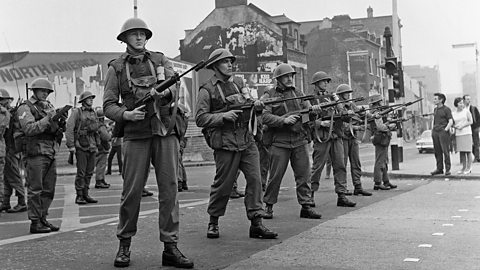The Hume-Adams Talks

In early 1988, Social Democratic and Labour Party (SDLP)An Irish nationalist party in Northern Ireland. When it was set up in August 1970, the SDLP was moderately left wing on social and economic issues. At the same time, the party sought political reforms within Northern Ireland and the eventual re-unification of Ireland. leader, John Hume began holding secret talks with Sinn FĂ©inAn Irish republican party. Founded in Dublin in 1905, Sinn FĂ©in came to prominence in the aftermath of the 1916 Easter Rising. Its subsequent growth in popularity led to Sinn FĂ©in candidates winning the majority of Irish seats in the December 1918 General Election. Subject to a number of splits in subsequent years, the party maintained its association with the Irish Republican Army (IRA) and, post-1969, the Provisional Irish Republican Army (PIRA).. president, Gerry Adams.
These talks lasted until August 1988 and remained secret until April 1993 - by which time both politicians had started meeting again.
When revealed, the talks (and Hume) were severely criticised:
- By other parties.
- From within the SDLP.
Changing Sinn FĂ©in policy
In 1992, Sinn FĂ©inAn Irish republican party. Founded in Dublin in 1905, Sinn FĂ©in came to prominence in the aftermath of the 1916 Easter Rising. Its subsequent growth in popularity led to Sinn FĂ©in candidates winning the majority of Irish seats in the December 1918 General Election. Subject to a number of splits in subsequent years, the party maintained its association with the Irish Republican Army (IRA) and, post-1969, the Provisional Irish Republican Army (PIRA).. published Towards a Lasting Peace.
This document:
- Focused on self-determinationThe right of a country to decide its political status and form its own government. rather than armed struggleTo use violence as part of a range of tactics in pursuit of political or social change. and argued Britain should persuade unionistA person who believes the union between Britain and Northern Ireland should continue. to join a united Ireland.
- Suggested that ±ő°ù±đ±ôČčČÔ»ćâs nationalistPeople who believe their country should be independent from other nations. For example, Irish nationalists, who want Ireland to be fully independent of Britain. parties should work together to achieve change.
- Sinn FĂ©inâs changing approach came in the aftermath of subtle changes in the language being used by the British Government in relation to Northern Ireland.
In November 1990, Secretary of StateA politician who is in charge of a government department and who is usually a member of the Cabinet. Peter Brooke had stated Britain had no âselfish strategic or economic interestâ in remaining in Northern Ireland.
In addition, Brooke:
- Approved the creation of a private line of communication with the Irish republicanA person who wants to establish an all Ireland republic completely independent of Britain. leadership.
- Attempted to restart discussions between the main constitutionalIn the context of the Northern Ireland peace process and negotiations leading to the Good Friday Agreement, this meant those engaged in peaceful politics and not associated with paramilitary groups. parties.
Progress
Some progress was made; it was agreed that any settlement would have to involve three âstrandsâ:
- Intercommunity relations - between the unionistA person who believes the union between Britain and Northern Ireland should continue. and nationalistPeople who believe their country should be independent from other nations. For example, Irish nationalists, who want Ireland to be fully independent of Britain. communities in Northern Ireland.
- NorthâSouth co-operation - between Northern Ireland and the Republic of Ireland.
- Intergovernmental negotiations - between the British government in London and the Irish government in Dublin.
However, by mid-1991, these talks had collapsed.
Following the 1992 British General Election (which saw a reduction in Sinn FĂ©inAn Irish republican party. Founded in Dublin in 1905, Sinn FĂ©in came to prominence in the aftermath of the 1916 Easter Rising. Its subsequent growth in popularity led to Sinn FĂ©in candidates winning the majority of Irish seats in the December 1918 General Election. Subject to a number of splits in subsequent years, the party maintained its association with the Irish Republican Army (IRA) and, post-1969, the Provisional Irish Republican Army (PIRA).. support and the loss of Adamsâ Westminster seat to the Social Democratic and Labour Party (SDLP)An Irish nationalist party in Northern Ireland. When it was set up in August 1970, the SDLP was moderately left wing on social and economic issues. At the same time, the party sought political reforms within Northern Ireland and the eventual re-unification of Ireland. ), Sir Patrick Mayhew replaced Brooke as Secretary of StateA politician who is in charge of a government department and who is usually a member of the Cabinet. for Northern Ireland.
Although Mayhew started a talks process, those talks also failed.
The Downing Street Declaration (1993)
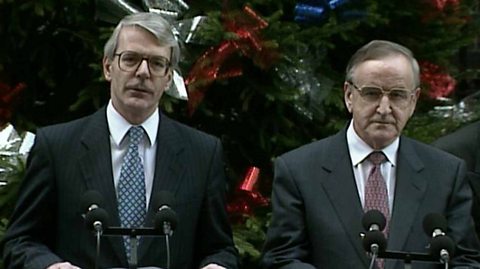
The Hume-Adams Talks restarted in the early 1990s and eventually led to Sinn FĂ©inAn Irish republican party. Founded in Dublin in 1905, Sinn FĂ©in came to prominence in the aftermath of the 1916 Easter Rising. Its subsequent growth in popularity led to Sinn FĂ©in candidates winning the majority of Irish seats in the December 1918 General Election. Subject to a number of splits in subsequent years, the party maintained its association with the Irish Republican Army (IRA) and, post-1969, the Provisional Irish Republican Army (PIRA).. accepting the need for unionistA person who believes the union between Britain and Northern Ireland should continue. consentApproval or agreement, particularly after thoughtful consideration. about Northern ±ő°ù±đ±ôČčČÔ»ćâs future.
However, the two governments - led by John Major and Albert Reynolds - could not accept this change in Irish republicanA person who wants to establish an all Ireland republic completely independent of Britain. thinking as a basis for peace.
Instead, in December 1993, they produced the Downing Street Declaration (1993).
In this:
- London agreed to âuphold the democratic wish of a greater number of the people of Northern Ireland on the issue of whether they wish to support the Union or establish a sovereign stateA state that administers its own government within its own defined territory and is not subject to or dependent on another power. united Ireland.â
- Dublin accepted that a united Ireland had to have majority consent within Northern Ireland. It also accepted that parts of the Bunreacht na hĂireannNew constitution of Ăire in 1937. A constitution sets out the rules by which a country is organised and governed. were unacceptable to unionistA person who believes the union between Britain and Northern Ireland should continue. and agreed â in the context of an overall settlement â to change that document.
Reaction
Sinn FĂ©inAn Irish republican party. Founded in Dublin in 1905, Sinn FĂ©in came to prominence in the aftermath of the 1916 Easter Rising. Its subsequent growth in popularity led to Sinn FĂ©in candidates winning the majority of Irish seats in the December 1918 General Election. Subject to a number of splits in subsequent years, the party maintained its association with the Irish Republican Army (IRA) and, post-1969, the Provisional Irish Republican Army (PIRA).. stated that while it was glad to see Britain accepting self-determinationThe right of a country to decide its political status and form its own government., the Declaration still allowed <glossaryterm id=âzw7s46f â>unionists a vetoThe official power to stop new laws being passed or reject courses of action. over its exercise.
The Ulster Unionist Party (UUP)Formed in 1905 as the Ulster Unionist Council. Following the partition of Ireland, the UUP was the governing party of Northern Ireland between 1921 and 1972. The UUP was the largest unionist party when the Good Friday Agreement was signed in 1998. was comforted by parts of the Declaration - however, it was unhappy with what it thought was its biasPreference for or against one person or group. toward Irish nationalistPeople who believe their country should be independent from other nations. For example, Irish nationalists, who want Ireland to be fully independent of Britain. or as they termed it, its âgreen tingeâ.
There was a similar reaction from the Democratic Unionist Party (DUP)A conservative and unionist party in Northern Ireland, formed in 1971 by the Rev Ian Paisley. The party has strongly opposed any role for the Republic of Ireland in the governing of Northern Ireland. From 1971-1998, it opposed the 1973-1974 Power Sharing Assembly and Executive, the Anglo-Irish Agreement and the Good Friday Agreement., which saw the Declaration as yet another step towards a united Ireland.
Ceasefire
Careful explanation of the thinking behind the Declaration â provided by the Irish Government â enabled the Provisional Irish Republican Army (PIRA)Irish republican paramilitary group formed when members split from the Official IRA (OIRA) in 1969. to announce a âcomplete cessation of military operationsâ as of 31 August 1994.
The PIRA made known its expectation that Sinn FĂ©inAn Irish republican party. Founded in Dublin in 1905, Sinn FĂ©in came to prominence in the aftermath of the 1916 Easter Rising. Its subsequent growth in popularity led to Sinn FĂ©in candidates winning the majority of Irish seats in the December 1918 General Election. Subject to a number of splits in subsequent years, the party maintained its association with the Irish Republican Army (IRA) and, post-1969, the Provisional Irish Republican Army (PIRA).. would have to be included in any new talks process.
However, the British Government stated that it wanted to hear the PIRA use the word âp±đ°ùłŸČčČÔ±đČÔłÙâ regarding its cessation.
It added that it needed time to test Irish republicanA person who wants to establish an all Ireland republic completely independent of Britain. actions rather than their words.
Dublin and Washington reacted positively to the cessation - a week after the announcement, TaoiseachThe prime minister of the Republic of Ireland (formerly Ăire). The word is Irish for chieftain. Albert Reynolds publicly shook hands with Gerry Adams.
Soon after, Dublin announced the establishment of a Forum for Peace and Reconciliation, to be attended by all Irish parties.
Meanwhile, US President Bill Clinton allowed Adams into the United States and organised numerous conferences aimed at supporting the peace process.
Within months, however, the Dublin part of this support network had crumbled.
In December 1994, the Fianna FĂĄilAn anti Anglo-Irish Treaty party when founded by Ăamon de Valera in 1926, Fianna FĂĄil has held power for most of the years since 1932. administration was replaced by a Fine GaelA descendant of the pro Anglo-Irish Treaty Cumann na nGaedheal, Fine Gael has led a number of coalition governments.âLabour-Democratic Left coalition governmentA government formed of more than one political party..
The new Taoiseach, John Bruton, was not known for his love of Irish republicanism.
Separately, loyalistA person who, in terms of culture, identity and politics, retains a strong loyalty to Britain and firmly opposes a united Ireland. paramilitaryA person or organisation that operates like a military force, but is not part of a country's official armed forces. announced their own ceasefire on 13 October 1994.
By the end of 1994 their political representatives - the Progressive Unionist Party (PUP) and the Ulster Democratic Party (UDP) - were engaged in discussions with representatives of the British government.
The Framework Documents
In February 1995, both governments published the Framework Documents which aimed to provide a framework for moving the peace process forward.
There were two documents:
- A Framework for Accountable Government in Northern Ireland outlined Britainâs proposals for new political institutions. These included a 90-strong assemblyAnother name for a parliament. that would exercise powers similar to its 1974 power-sharing predecessor.
- A New Framework for Agreement was produced jointly by London and Dublin. It was based around the principles ofself-determinationThe right of a country to decide its political status and form its own government., consentApproval or agreement, particularly after thoughtful consideration., non-violence and parity of esteemIn relation to the Good Friday Agreement, parity of esteem meant that nationalist and unionist rights, aspirations and cultural identity would be regarded as equal..
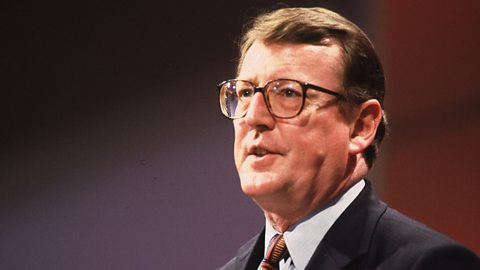
Reaction
Reactions from the local parties were mixed:
- unionistA person who believes the union between Britain and Northern Ireland should continue. saw too many similarities with the Sunningdale Agreement and opposed the development of North-South links.
- Not long afterwards, the Ulster Unionist Party (UUP)Formed in 1905 as the Ulster Unionist Council. Following the partition of Ireland, the UUP was the governing party of Northern Ireland between 1921 and 1972. The UUP was the largest unionist party when the Good Friday Agreement was signed in 1998. leader, James Molyneaux â who had always claimed to be listened to by the British Government â resigned. He was replaced by David Trimble.
- Sinn FĂ©inAn Irish republican party. Founded in Dublin in 1905, Sinn FĂ©in came to prominence in the aftermath of the 1916 Easter Rising. Its subsequent growth in popularity led to Sinn FĂ©in candidates winning the majority of Irish seats in the December 1918 General Election. Subject to a number of splits in subsequent years, the party maintained its association with the Irish Republican Army (IRA) and, post-1969, the Provisional Irish Republican Army (PIRA).. argued that the Framework Documents allowed unionists to vetoThe official power to stop new laws being passed or reject courses of action. progress.
- Only the Social Democratic and Labour Party (SDLP)An Irish nationalist party in Northern Ireland. When it was set up in August 1970, the SDLP was moderately left wing on social and economic issues. At the same time, the party sought political reforms within Northern Ireland and the eventual re-unification of Ireland. and Alliance Party of Northern Ireland (APNI)A liberal, centre ground political party in Northern Ireland. Although broadly unionist when it was founded in April 1970, its MLAs designated as âOtherâ in the Northern Ireland Assembly rather than âUnionistâ or âNationalistâ. reacted positively to what had been proposed.
The collapse of the ceasefire
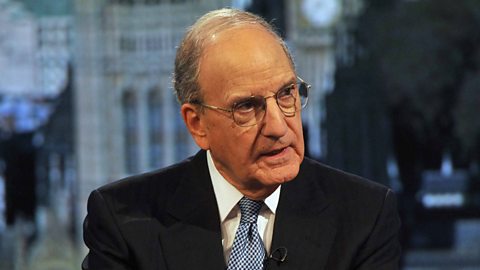
The absence of talks between the British Government and Irish republicanA person who wants to establish an all Ireland republic completely independent of Britain. began to impact on the peace process and so the Provisional Irish Republican Army (PIRA)Irish republican paramilitary group formed when members split from the Official IRA (OIRA) in 1969. began to plan for a return to violence.
Unaware of this, London established a commissionA group of people given the task of investigating or solving something by the government., chaired by former US US SenateA chamber of the United States Congress, which together with the House of Representatives, makes up the legislature of the United States. Majority Leader George Mitchell, to consider decommissionTo deactivate or remove in a safe manner..
Its solution - christened the twin track approach/parallel decommissioning - suggested the handover of weapons alongside talks.
The commission also suggested principleA rule, belief, or idea that acts as a guide. of non-violence, which all parties would have to sign up to in order to demonstrate their commitment to peace.
Before long there were more problems.
- The first was the decision to hold elections to a Peace Forum as a way of providing a mandateWhen a political leader or party has been given approval to do something by the voters. for the negotiators
- The second was the end of the PIRA cessation in February 1996 when it exploded a bomb at Canary Wharf in London.
The PIRA blamed its decision to return to violence on what they claimed was the British Governmentâs continued reluctance to move the peace process forward.
Reaction to the Peace Forum
unionistA person who believes the union between Britain and Northern Ireland should continue. supported the Forum, but nationalistPeople who believe their country should be independent from other nations. For example, Irish nationalists, who want Ireland to be fully independent of Britain.didn't.
In their view, the plan was yet another stalling exercise, an example of the influence that the unionist parties in general and the Ulster Unionist Party in particular had over the British Government.
In spite of their hostility, the Social Democratic and Labour Party (SDLP)An Irish nationalist party in Northern Ireland. When it was set up in August 1970, the SDLP was moderately left wing on social and economic issues. At the same time, the party sought political reforms within Northern Ireland and the eventual re-unification of Ireland. and Sinn FĂ©inAn Irish republican party. Founded in Dublin in 1905, Sinn FĂ©in came to prominence in the aftermath of the 1916 Easter Rising. Its subsequent growth in popularity led to Sinn FĂ©in candidates winning the majority of Irish seats in the December 1918 General Election. Subject to a number of splits in subsequent years, the party maintained its association with the Irish Republican Army (IRA) and, post-1969, the Provisional Irish Republican Army (PIRA).. contested the Forum elections, however;
- Sinn FĂ©in announced that it would boycottRefusing to buy or use the goods or services from a person, country or organisation out of protest. Forum meetings.
- The SDLP announced that it would make up its mind to attend the Forum on a day-by-day basis, depending on what the agenda was.
Election result
The results of the elections to the Forum revealed that support for the Democratic Unionist Party (DUP)A conservative and unionist party in Northern Ireland, formed in 1971 by the Rev Ian Paisley. The party has strongly opposed any role for the Republic of Ireland in the governing of Northern Ireland. From 1971-1998, it opposed the 1973-1974 Power Sharing Assembly and Executive, the Anglo-Irish Agreement and the Good Friday Agreement. and Sinn FĂ©inAn Irish republican party. Founded in Dublin in 1905, Sinn FĂ©in came to prominence in the aftermath of the 1916 Easter Rising. Its subsequent growth in popularity led to Sinn FĂ©in candidates winning the majority of Irish seats in the December 1918 General Election. Subject to a number of splits in subsequent years, the party maintained its association with the Irish Republican Army (IRA) and, post-1969, the Provisional Irish Republican Army (PIRA).. had increased.
The Ulster Democratic Party (UDP)A loyalist political party which was associated with the Ulster Defence Association (UDA) when it was formed in 1981. The UDP dissolved in 2001. and Progressive Unionist PartyA small loyalist party which, when it was formed in 1979, was associated with the Ulster Volunteer Force (UVF) and Red Hand Commando (RHC) - both of these were illegal loyalist paramilitary groups. also won seats, thus enabling negotiations that had the potential to bring all the key players in the process along.
Peace talks finally began in June 1996 â without Sinn FĂ©in.
However, the entire process was in some form of limbo throughout 1996 and during the first half of 1997.
It appeared that no real progress would be possible until a stronger government had been installed in London.
For more information, including archive clips, on this subject, visit ±«Óătv: Ten Chapters of the Northern Ireland Troubles: ()
Test your knowledge
More on Changing relations: Northern Ireland and its neighbours, 1965-98
Find out more by working through a topic
- count11 of 11
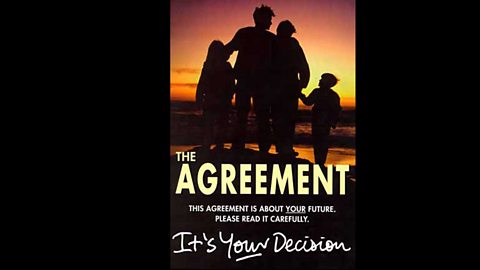
- count1 of 11
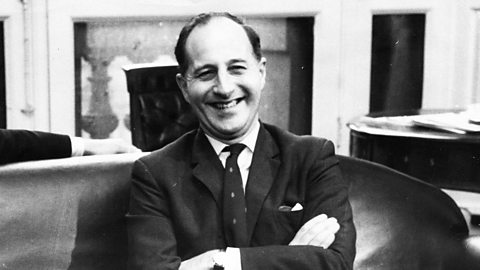
- count2 of 11
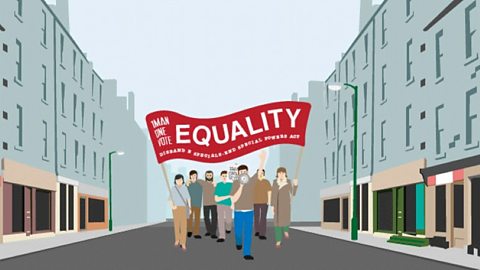
- count3 of 11
